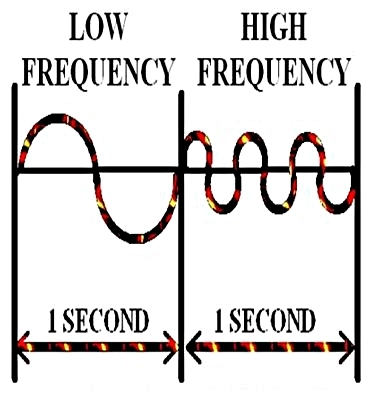

Sound is the result of energy created by vibrations. Sound vibrations travel in waves which move the air. Sound waves are called cycles.
Cycles repeat a specific number of vibrations per second. Our ears pick-up these cycles and our brains then process them as the perception of organized sound – as pitch.
Cycles repeat a specific number of vibrations per second. Our ears pick-up these cycles and our brains then process them as the perception of organized sound – as pitch.
German physicist Heinrich Hertz, researched and developed ways to measure sound vibration cycles. This is the reason why vibration-cycles per second are called Hertz (abbreviated as Hz), and how the frequency of sound vibration is measured.
Frequency is the number of times the motion of a sound vibration wave repeats per second.
Sound wave cycles are measured as specific number of Hz.
Sound waves with a low number of Hz (frequency) are slow and produce low sounds. Higher number Hz frequencies create high-register sounds.
Our ears pick up these vibrations and transfer them through their inner workings to our brains, which then interprets them and perceives these frequencies as specific pitches.
In music, pitches of specific frequencies are assigned letter names.
(Pitches are also called note names and they utilize letters labeling them from A-G.)
The frequencies of individual notes can be increased or decreased by adding symbols to pitch letters called sharps and flats.
Sharps raise a note’s frequency and flats lower a note’s frequency.
Potential and Kinetic Energy The R’s of Remembering Practice Purpose Music Staff Evolution
Music Clef Origins Scroll History Peg Information Bowed String Instrument History
Friction Bass Tuning Mechanism Modern-Day Violin Family Bridges Through the Ages




